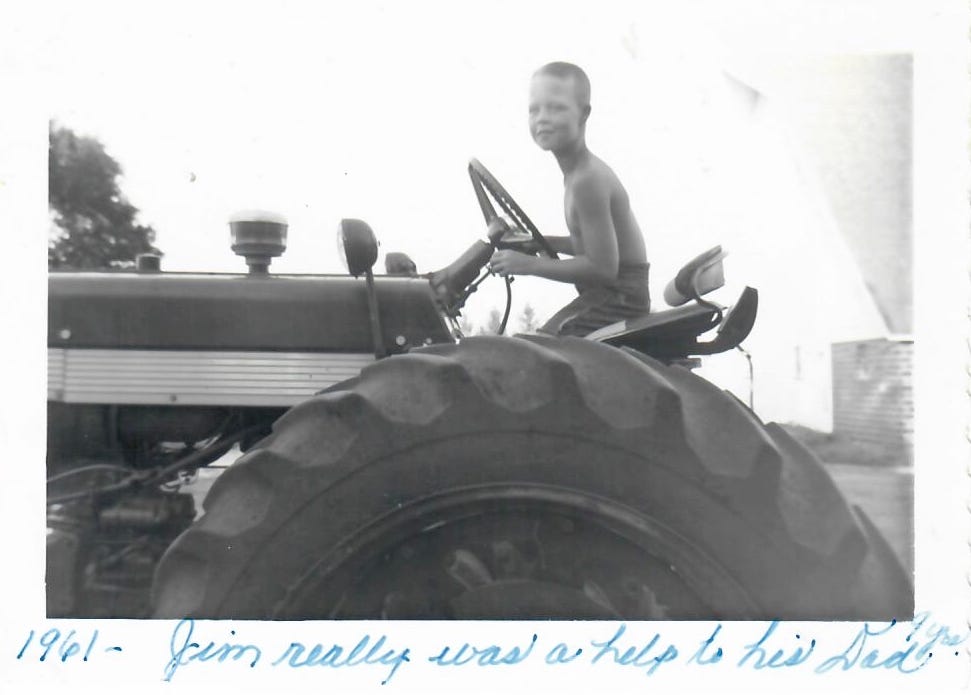
If tractors could talk:
June, 2025
Dear Jim:
Well, I am glad you think enough of me these days to wash me once a year and drive me to town for the 15 block-long July 4 parade. Long enough for my engine to get warm.
Sorry if that sounds a little sarcastic.
You DO keep me inside a shed all year, and You DID send me to town a few years ago to get reconditioned and repainted. But that was only after leaving me sitting, my muffler missing, in the old pighouse with the leaky roof—after years of inactivity and neglect.
I was once your farm’s big tractor, after all. We did EVERYTHING together!
Spring, summer, fall, and winter—I took care of you and your family’s dairy and hog farm: Disking, plowing, grinding feed, planting corn, cultivating corn. Cutting hay, raking hay, baling hay, hauling hay, and running the hay elevator. Picking corn with the two-row mounted corn picker.
I had important jobs almost daily.
Do you remember when:
• You took me disking at Uncle Willy’s farm down by the river one spring and the gnats about drove you crazy. But I wouldn’t let you quit until the field was done.
• I kept you warm and safe in the Heat Houser® while we were out plowing late in the fall when the family bull came charging toward us. We raced back to the place from the middle of the field in road gear because you were so scared.
• You were embarassed when your mom cultivated with me in summer wearing that skimpy strapless top because she wanted a sun tan. But I kept her out in the middle of the field so the neighbors wouldn’t see her.
• You learned NOT to keep the TA (torque amplifier) engaged when we were pulling a load of corn down Volberding’s Hill on the way to town (you watched the MPH max out and wondered if we would make it around the curve at the bottom of the hill).
• Your dad got us our very first tractor radio, and we listened to rock AM station KIOA back in the 1960s, EVERY SINGLE HOUR you drove me.
• And you taught me to pull the John Deere 24-T baler with its new bale thrower, making me stop frequently through the whole field because you kept missing sending the bales into the hay wagon. That was fun!
• Later, you got a bigger tractor and saddled me with the front end loader, and I didn’t complain. You made me shovel snow and sh*t .
• I started in all kinds of weather; I was reliable and dependable; I gave you my best.
But now—you’re old, and I’m old.
Just what are your plans for the future, anyway? You don’t even take me on antique tractor rides in the county. You just pull me out of the shed once a year, wash me up, and drive to town for a parade.
What will become of me when you are not able to even do that anymore?
Love,
Your 560
My wise friend, Rev. Lewis Flanagan, and I were recently talking about moving— along with keeping or getting rid of old possessions. He said, “Only keep the things that have stories that go along with them.”
My old 560 tractor and I have shared many stories together.
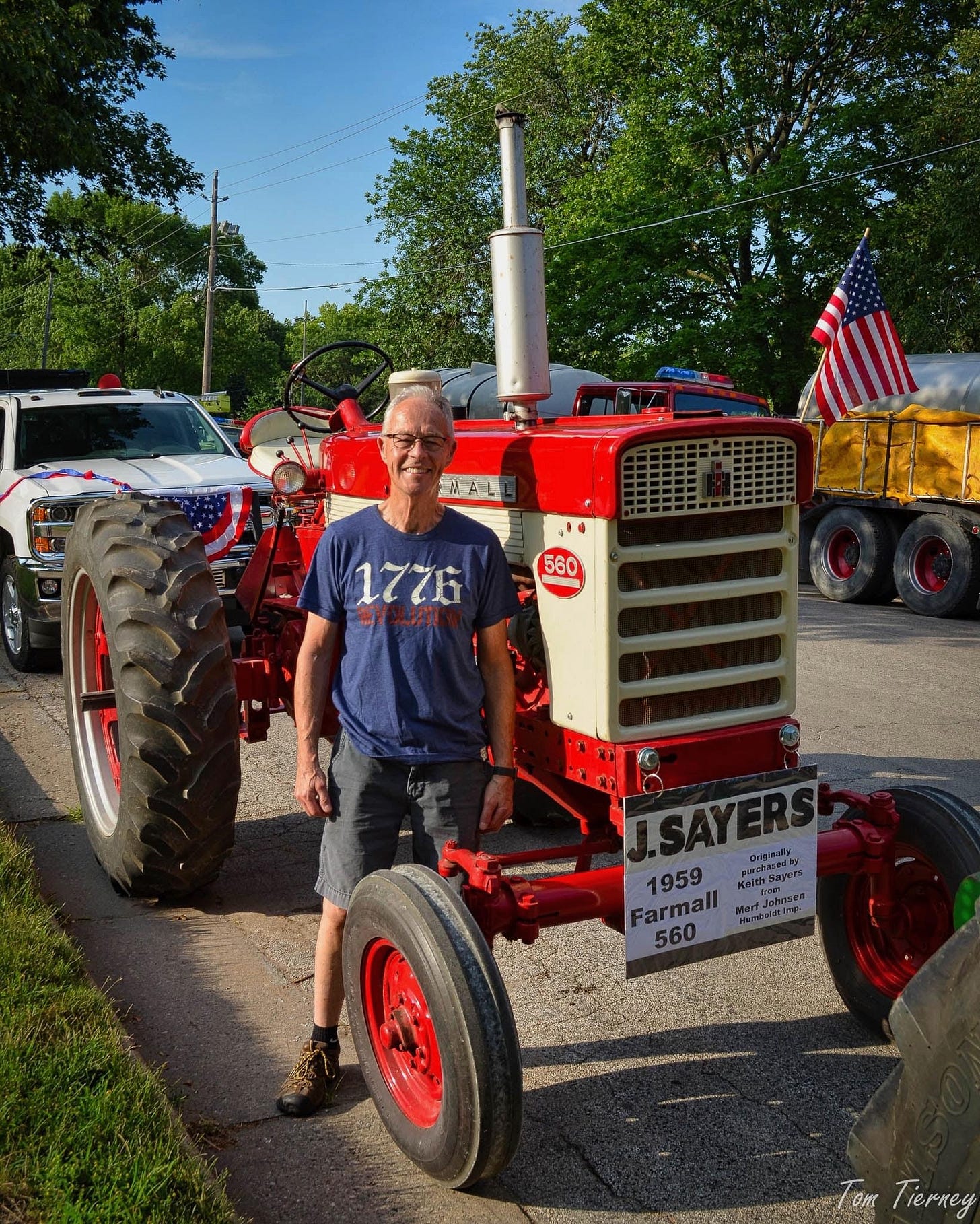
The 560 and I grew up on the farm together
When it first arrived, new, on our farm in 1959, the 560 was too big for me. At seven years old, I didn’t know how to run a foot clutch, and my legs were too short to fully disengage the clutch. I hardly weighed enough for the seat spring to cushion my ride.
Dad bought the tractor from Merf Johnsen, the husband of his cousin Ethel, and owner of Humboldt Implement.
I remember being jealous that first summer when our two neighbor high school kids, Bruce and Leon Kirchhoff, were helping us make hay and got to drive the tractor before me. They argued over who got to drive the new tractor back to our place, pulling a load of hay from my great uncle’s farm in Dakota City.
Like the 560 wrote, it was our “big” tractor—all 60 HP—in the early 1960s. On a dairy and hog farm like ours, work and chores had to be done every day, year-round.
But I soon grew bigger. A couple of years later, after I got longer legs, my dad, Keith Sayers, assigned (or allowed, rather) me to do almost everything with that tractor!
(Except for planting corn. Only my dad planted corn.)
My mother, Marian Sayers, was one of those farm women who helped outdoors whenever needed, doing whatever was needed. At our house, that included field work and running the tractor.
My dad bought a two-row mounted corn picker for the 560. I helped him hook it onto the tractor each fall, a major job that meant removing the muffler, him ducking under the low door while driving into the old machine shed, carefully maneuvering into the picker, attaching, backing out, and then connecting the big elevator in back. I watched anxiously as he ducked going in and out of the shed, hoping he would not decapitate himself accidentally if his foot slipped off the clutch.
I was intimidated by all the picker’s moving gears and chains. When my mom ran the machine on bitterly cold fall days, I especially worried about her, climbing up, disappearing onto the tractor seat, while wearing her heavy, long winter coat and scarf. No cab, no protection, no nothing. It was cold on there as she worked between the screaming, treacherous side chains, vicious rotating shafts, piles of corn leaves everywhere, and a hot exhaust pipe threatening to burn up any corn trash that got next to it. But she loved helping out.
Among all the other farm jobs this implement was good for (as mentioned in its letter), one I especially remember is running the grinder-mixer. There was always feed to grind for the cows, calves, and pigs!
I learned skills of backing the 560 and the grinder up to the bin to run the corn out into the grinder-mixer, grinding the feed, then backing it with the unloading auger sticking way out, aiming it through the little barn window into the feed storage corner or the small door of the calves’ feed house. With my backup skills, the auger sometimes took a beating.
It was not all work and no play, though! In winter, our dad hooked up multiple sleds to the back of the 560 and pulled us kids around the farmyard—fast!
Yes, the 560 was an all-around power unit that kept our farm running. Including running the backup generator when the electricity was out.
But as the tractor noted above, over time, its power eventually wasn’t adequate for our growing farm that added more acres and needed us to do more, faster. My dad moved up in tractor sizes to a John Deere, then a Case, then another Farmall, then a White FWD, and another John Deere. I guess you could call him brand agnostic or machinery colorblind; he liked doing business with multiple dealers in town.
The 560 got older and eventually was relegated to the job of becoming our loader tractor. It got a wide front end. Still important, but as it said, literally a shi*t job.
Time passed. I left home and moved away. Years later, I moved back to Humboldt, got a job in town, and started farming part-time. The 560 was still there, but working less and less.
My dad retired. I bought a used Farmall 706 with a bigger, better loader. The 560 found a resting place in the old, dusty pighouse, forgotten and unused. When my dad died, the tractor was mine.
But then, new life and renovation!
In 2007, I faced health issues with my kidneys and UT system, requiring surgeries and lifestyle adaptations, including multiple visits to Ames and Rochester, MN, for treatments.
One day around then, I wandered into the old pighouse, looked at the 560, and thought, will this thing even run anymore?
I called my friend Dean Potratz in Humboldt, a mechanic whose skills included fixing up old tractors. Maybe he could take the tractor to his shop and take a look. I don’t want to spend a lot of money, but this thing does no good sitting here, I said.
Dean drug the 560 onto his trailer and hauled it to town.
Surprisingly, with about 5,000 original hours on it and never having had any major engine work, it did not have a seized engine. Dean called me to say, Let me see what I can do!
Before too long, he brought back my looking-like-new 560: new tires, shiny paint, and an enthusiastic roar when it started up.
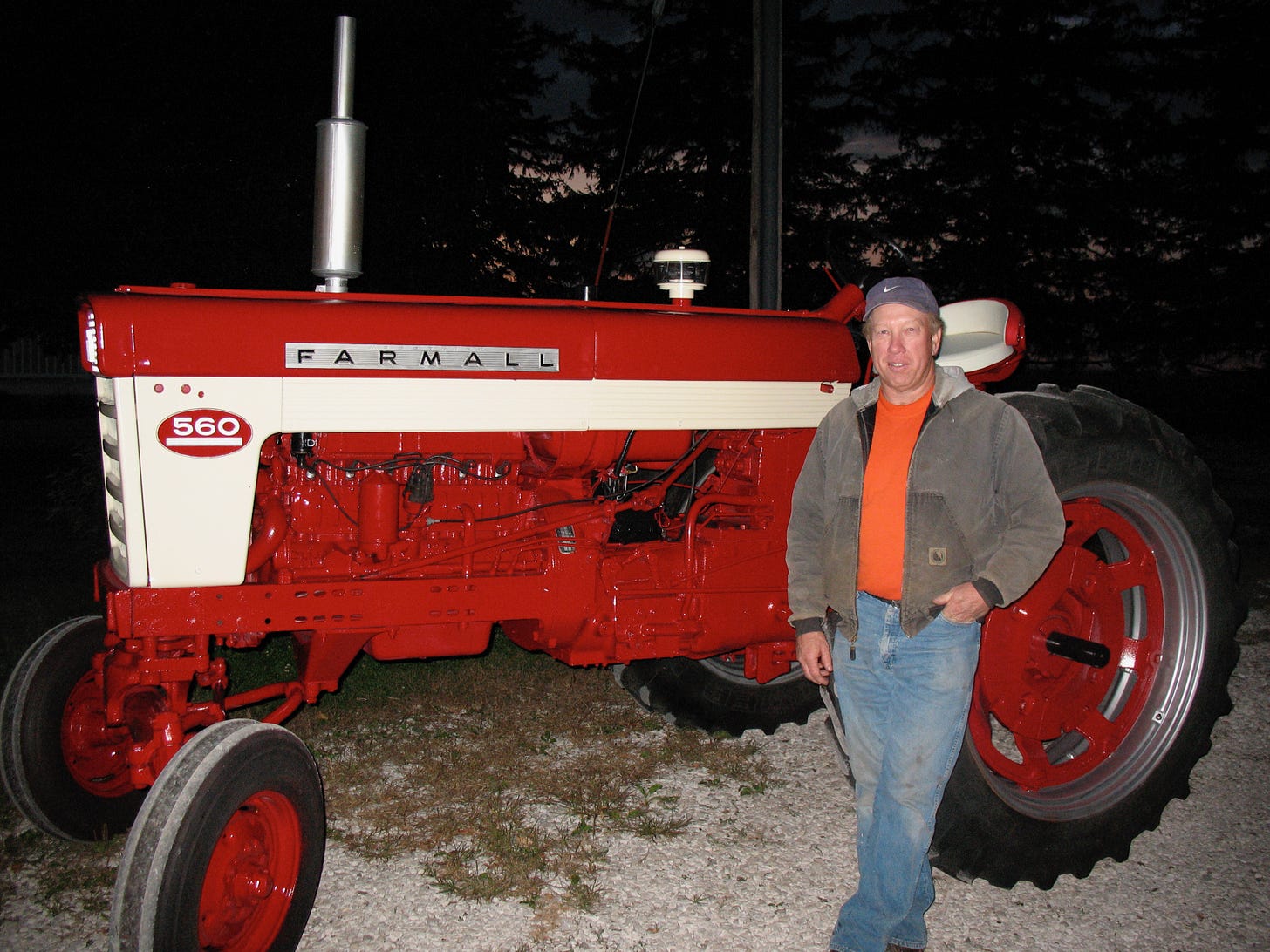
But now, what’s a meaningful job for my old tractor?
Today, my 560 and I are seen together in parades—well, actually only one parade—the July 4 parade held every year in Humboldt. My son Cody made me a sign to hang on it the first year. But running a tractor only once a year is not the best for any machine.
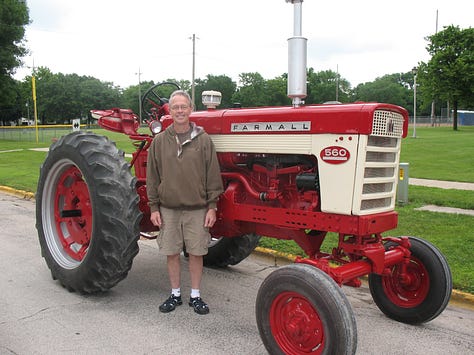
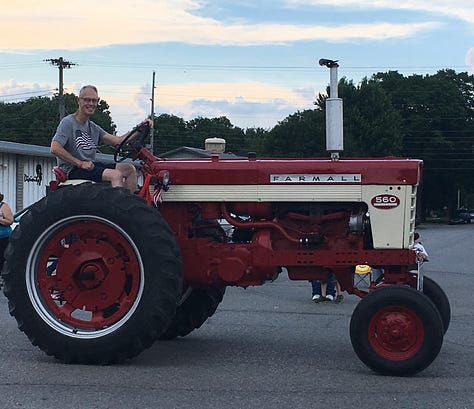

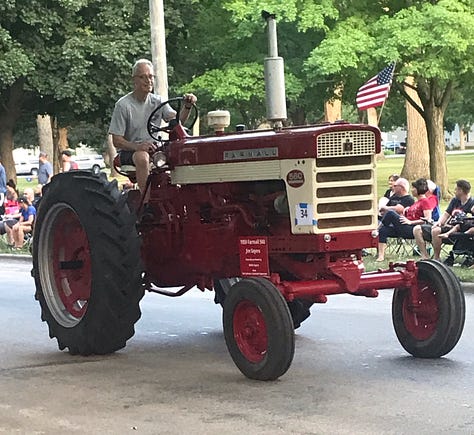
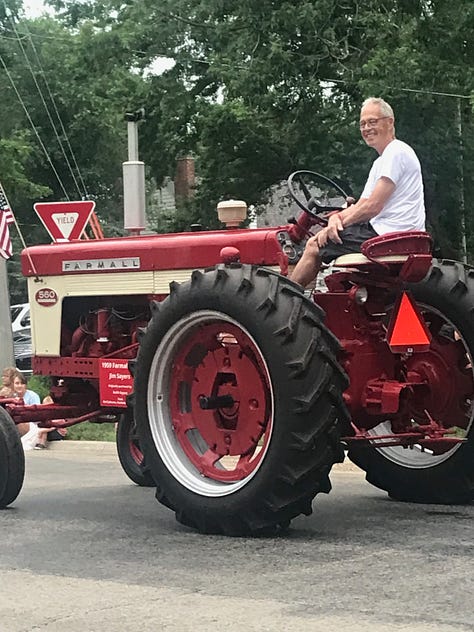

The Farmall 560 (gas)—from Wikipedia:
Row-crop agricultural tractor; Manufacturer: International Harvester
• Production 1958-1963
• Weight 6,563 pounds (gasoline)
• Gross power (6 cylinder) - 66 horsepower; PTO power - 59.48 horsepower; Drawbar power - 53.12 horsepower
The Farmall 560 is a five-plow row crop tractor produced from 1958 to 1963. Successor to the Farmall 450 series, it was part of the line of large tractors originating with the Farmall M. The updated tractors marked an attempt by Farmall to respond to increased competition from other tractor manufacturers that were introducing more modern tractors with greater power. The 560 and the smaller Farmall 460 were restyled and had new engines.
Since the transmission components were unaltered from the original M systems, the larger engines produced reliability issues, resulting in a public relations problem for International Harvester and requiring replacement with new, redesigned powertrain components. The 560 had been restyled from the previous series in an attempt to modernize the appearance of the Farmall line.
The 560 had a five-forward gear and one reverse sliding gear (with torque amplifier) transmission.
About 70,000 560s were produced. Prices ranged from $6,000 for gasoline versions to $6,700 for diesels.
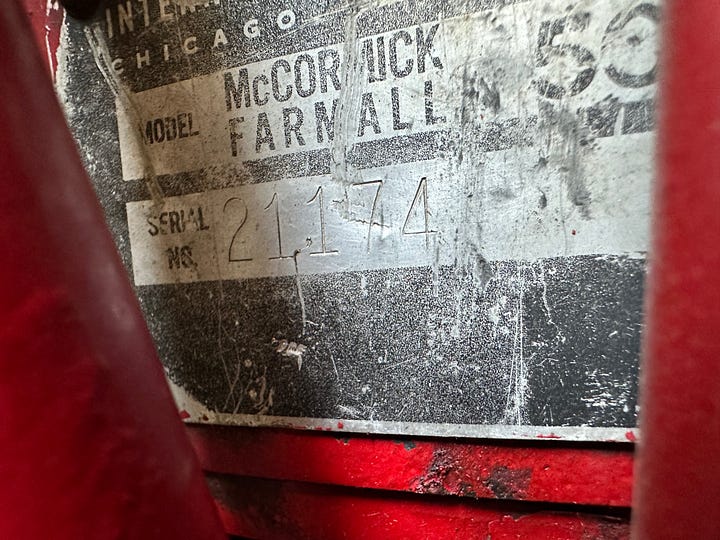
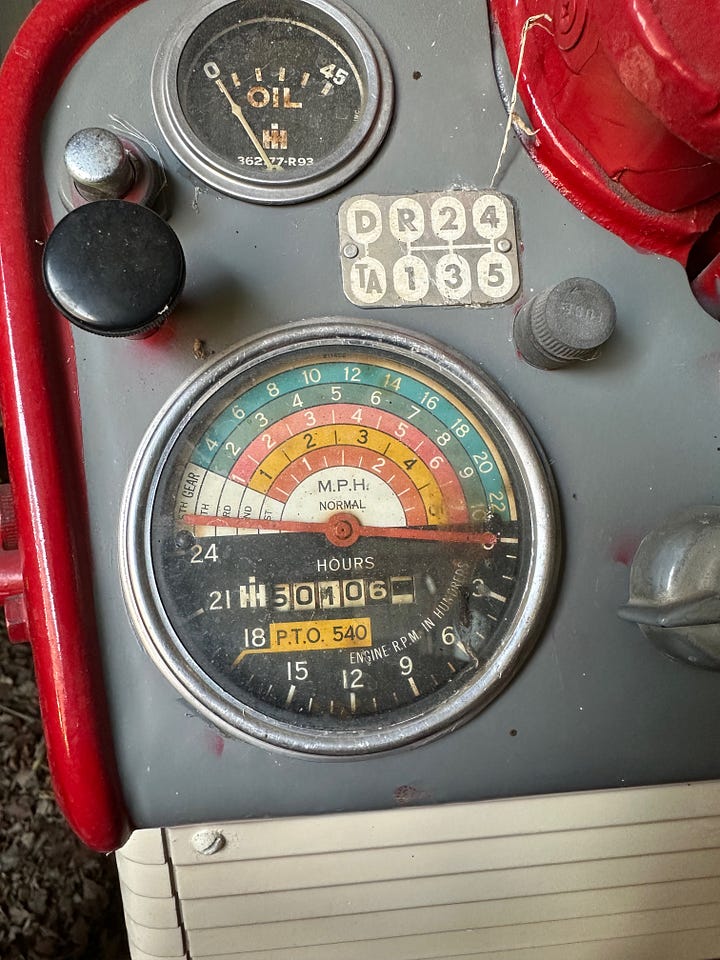
The tractor asked a good question: ‘What's next?’
My friend Tom Hundertmark is an auctioneer and old tractor collector. I am sure he can help me figure out what happens when the 560 needs to find a new home.
Because even with all the great stories we have shared together, our relationship is not eternal.
Our kids do not live nearby; neither has a location nor motivation to keep an old tractor around. I look online and see that 560s typically sell in the $5,000 range, should I want to sell it. Or, maybe donate to the Humboldt County Historical Association Museum?
My tractor, like agriculture today, is not the same as it was when I was growing up.
But then, neither am I.
Maybe the best I can do is consider going on a few tractor rides while the 560 and I still can. And keeping both our batteries charged.




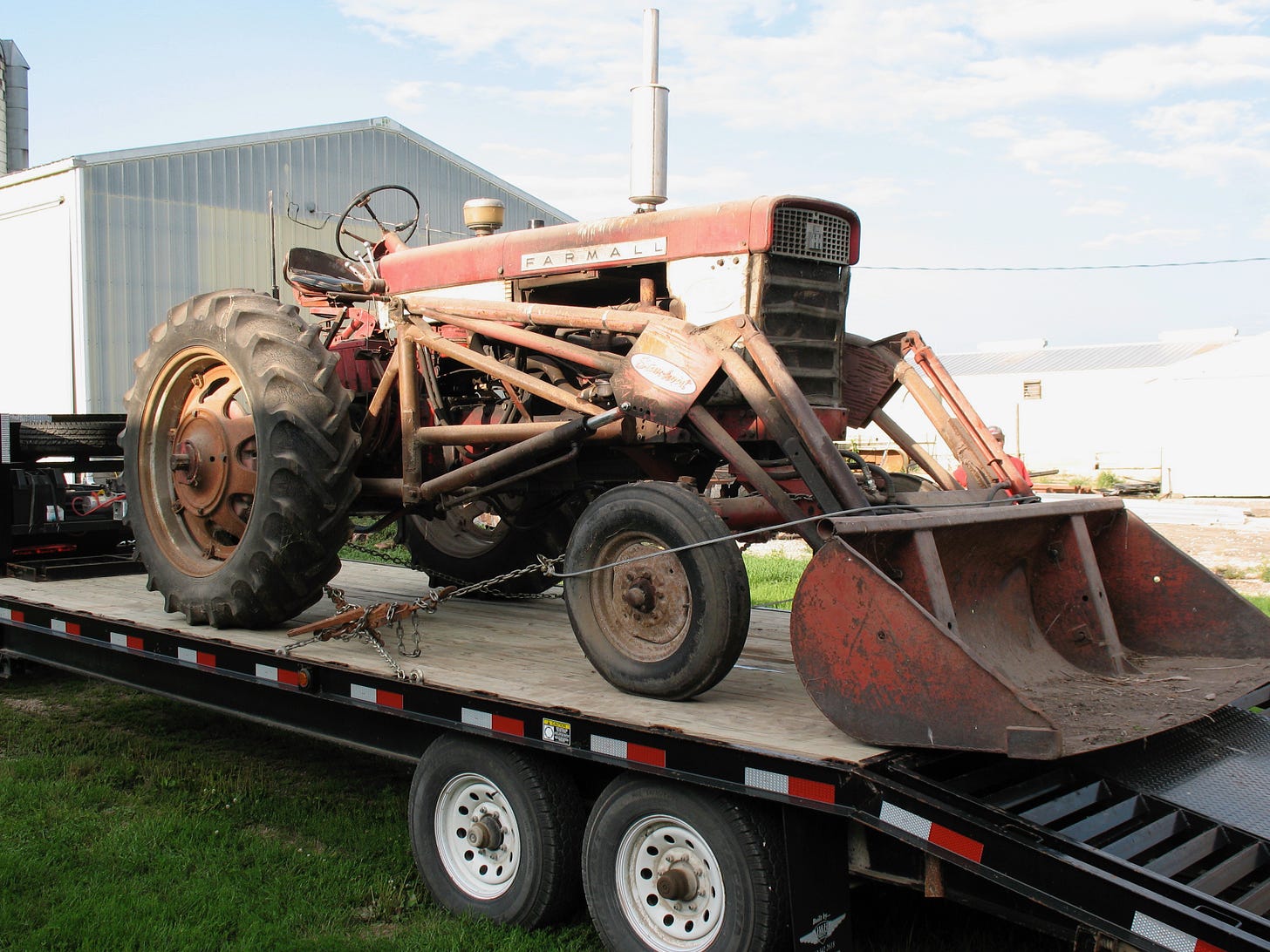


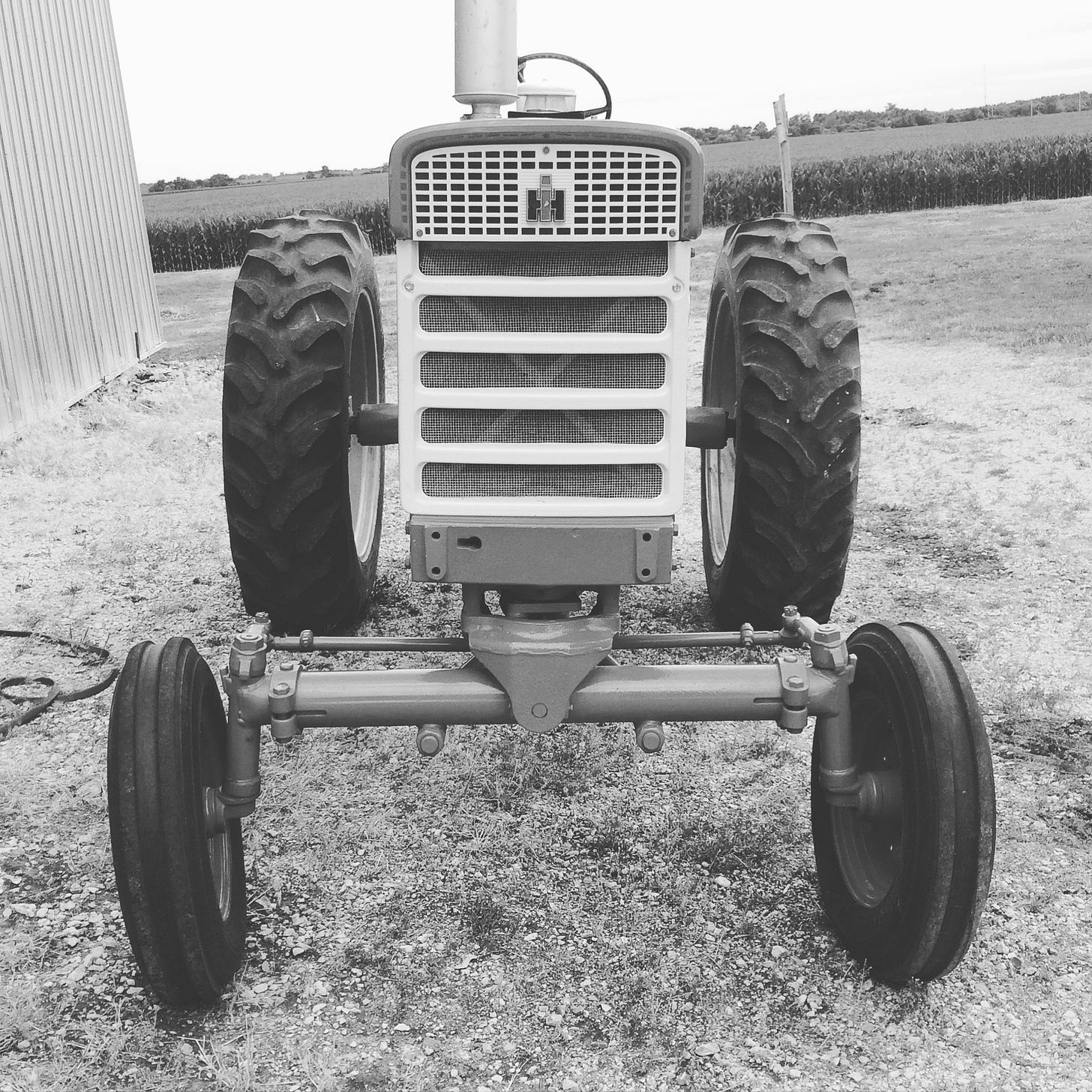
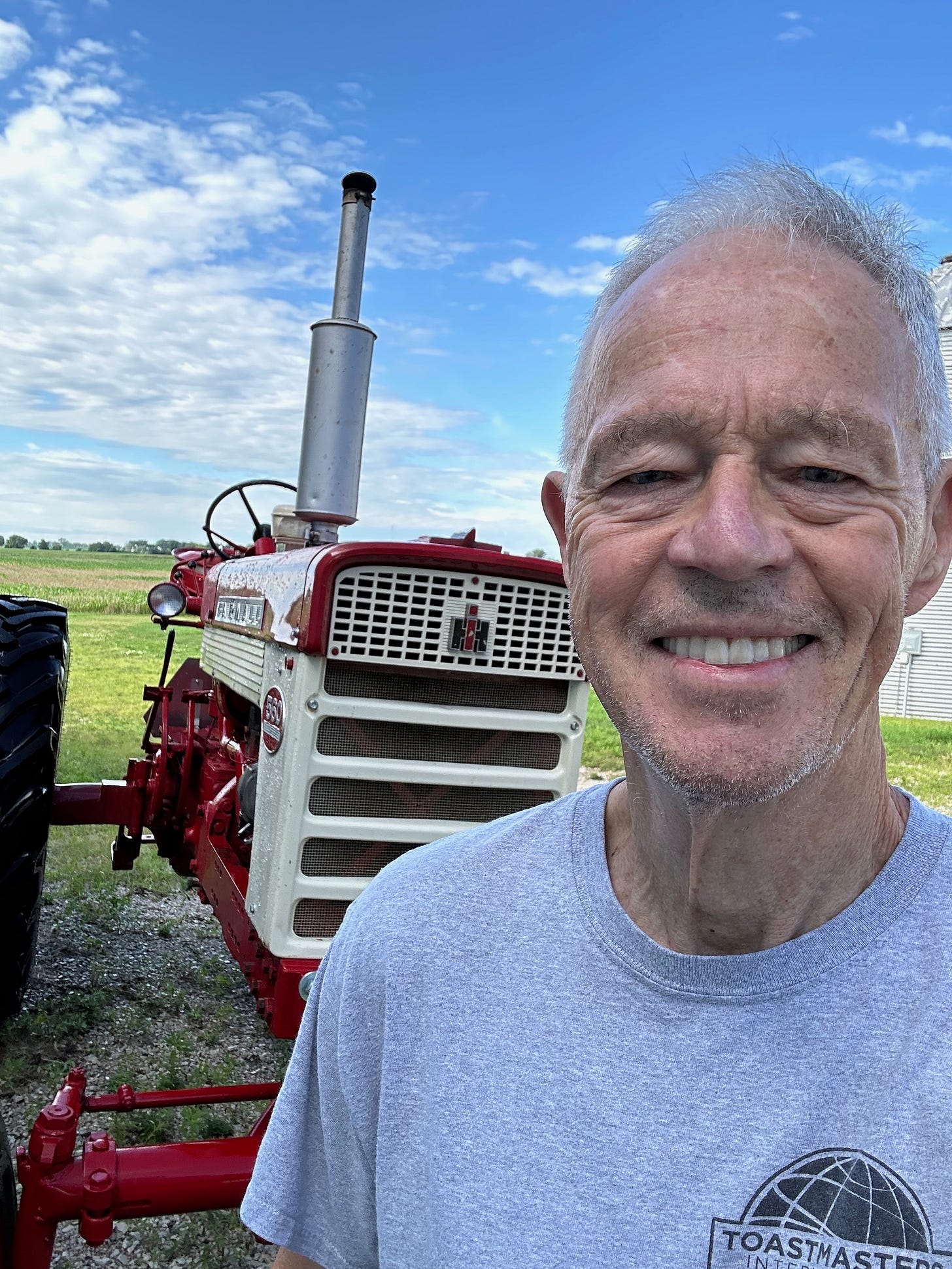
I love this story, Jim. It's hard to say goodbye to a faithful friend, and I hope you have more years together. But when it's time, I know your tractor will be grateful that you find the best possible home for it.
We moved to a ranch in LA county, and our first Christmas card was all of us sitting on our John Deer. It wasn't the workhorse your Farmall was, but it weekly mowed a few pastures. My husband fiercely protected his hours on the mower. They were his therapy. No dad duties. No interruptions. Our little kids loved it when he put on the bucket and lifted them high into the sky. As the kids got older, they charged their 15-year-old friends to "let them drive" the mower, virtually pulling a Huck Finn in doing their chores. All tractors carry our stories! Well said.